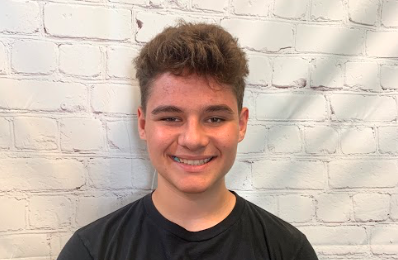Newly developed app, MyShake, notifies users before impending earthquakes
October 23, 2019
With the amount of technology continually being produced out of Silicon Valley it was inevitable that the surplus of California earthquakes would bring about the development of an improved way to predict earthquakes.
The MyShake cell phone application, was designed by the University of California at Berkeley. This app will give iOS and Android users a warning that the shock waves from an earthquake may be on their way from other parts of the state.
The system will not predict earthquakes but will notify cell phone users that a quake has occurred and will alert users of the impending arrival of the tremors before they reach them.
Depending how far you are from the original epicenter, you may have from 5 seconds to a minute to prepare for the shaker’s arrival. Although this is a very short amount of time, in terms of earthquakes a couple seconds notification could help save countless lives by getting people to move away from brick buildings or buildings with a lot of glass.
However, this digital alert will not completely replace the old analog protocol of “duck and cover”.
One of the largest areas of improvement may be on the roads and highways. With the MyShake app, after receiving the earthquake alert, drivers may now pull to the side of the road and remain there until the earthquake passes. They may be able to avoid elevated roadways and other vulnerable structures that failed during the Loma Prieta quake.
Shock waves from an earthquake move at a much slower than the speed of cell phone networks. Therefore, an earthquake originating on the southern San Andreas Fault near Santa Cruz would take 30 seconds to reach Amador High, which allows for enough time to send out a smartphone notification before the quake reaches Pleasanton.
This thirty seconds might be enough time for students to get away from flimsy fluorescent lights, lab chemicals, or heavy boxes of books on classroom shelves.
The U.S. Geological Survey has hundreds of sensors over the state. Any earthquake over a moderate magnitude wild alert your cell phone network and give you an indication that the ground was shaking nearby. How much time you have depends on how far you are from the epicenter.
Many students seem to have positive outlooks on the MyShake app and are likely to try out the app.
“I think that there will be another great earthquake in my lifetime, and I believe that this app can help me be more prepared for it when it happens,” said Evan Black (‘22).
Jennifer Seetho from the California Office of Emergency Services was interviewed by phone, and said the system has worked in other countries but there are some issues that need to be worked out.
“The phone networks might become overloaded by having to send a text message out simultaneously to all subscribed users of the app. It depends on the capacity of the individual networks and how many apps are downloaded. Right now My Shake has 770,000 users,” said Seetho.
Although the app MyShake will help improve your safety immediately before an earthquake, the best way to prepare for an earthquake is to have an earthquake preparedness kit.
Although some families may store supplies for times of disasters and earthquakes, they may be lacking the proper supplies that could save a life after a natural disaster.
“I only have a flashlight in it [earthquake preparedness kit] and a portable battery for my phone,” said Sachin Patel (‘20).
Families should store water, food, flashlights, batteries, radios, and medication in safe space in their home to provide comfort and safety in times after an earthquake. A more detailed list can be found on many state and local websites, including Livermore-Pleasanton Fire’s CERT program.



